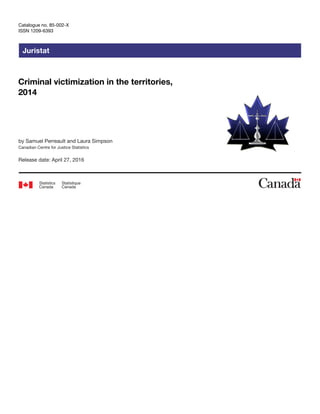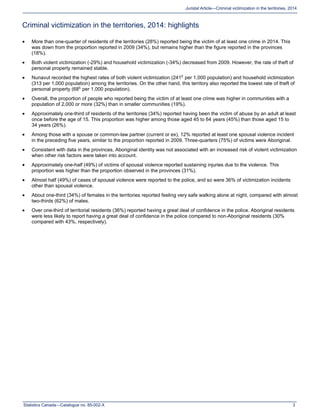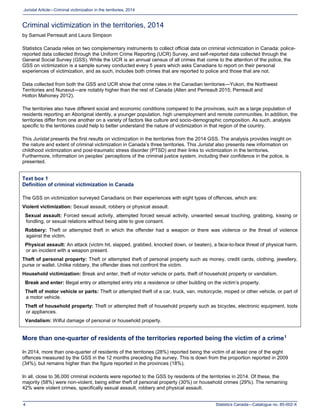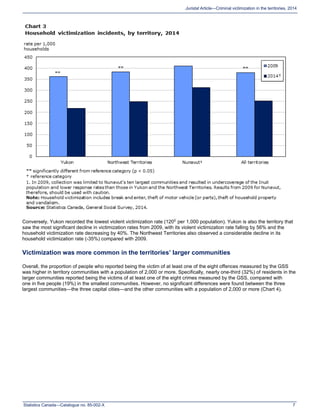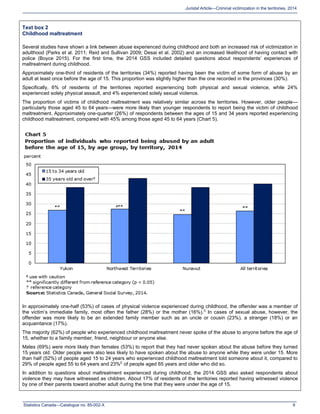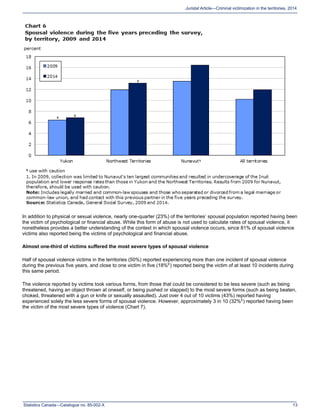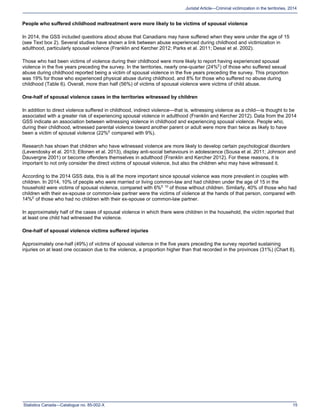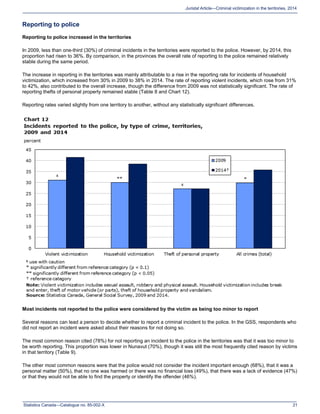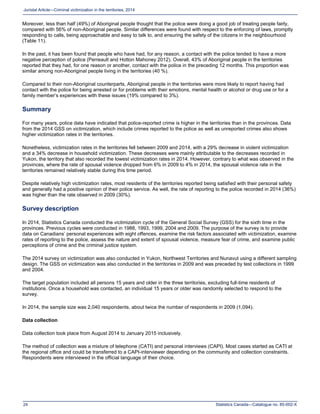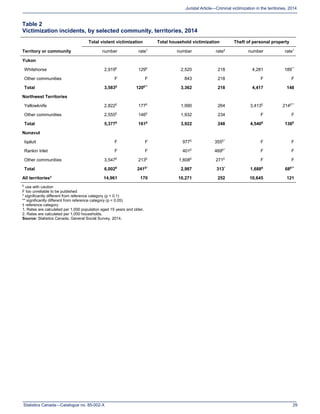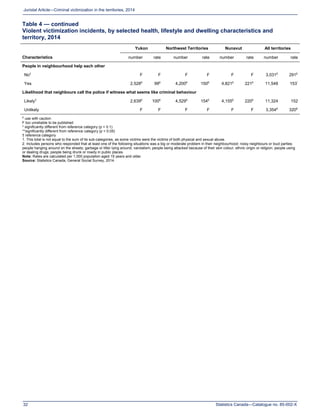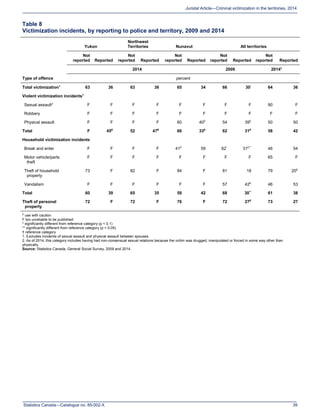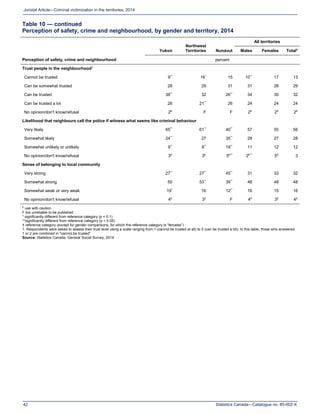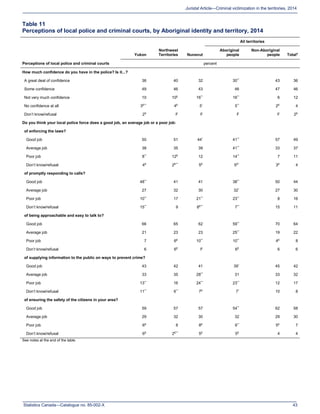More than one-quarter of residents in Canada's three territories reported being the victim of at least one crime in 2014, a decrease from 2009 but still higher than rates in provinces. Victimization rates were highest in Nunavut, while Yukon saw the largest declines since 2009. Rates of violent crimes and household crimes decreased in the territories from 2009, though theft rates remained stable. Victimization was more common in larger communities of 2,000 or more residents. Approximately one-third of territorial residents reported experiencing abuse as children.
